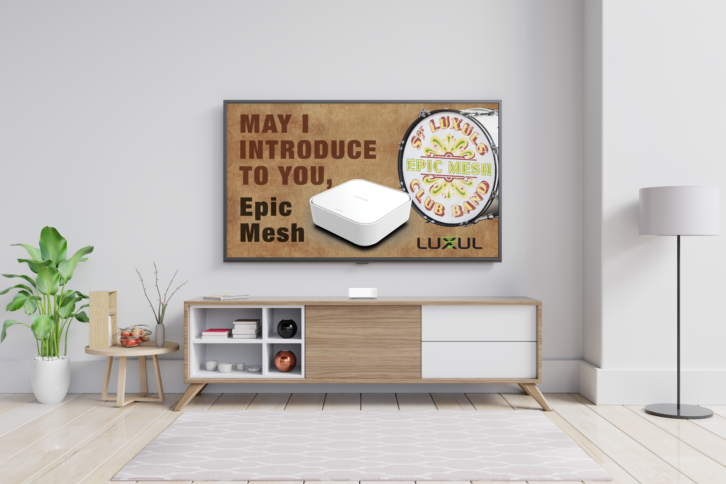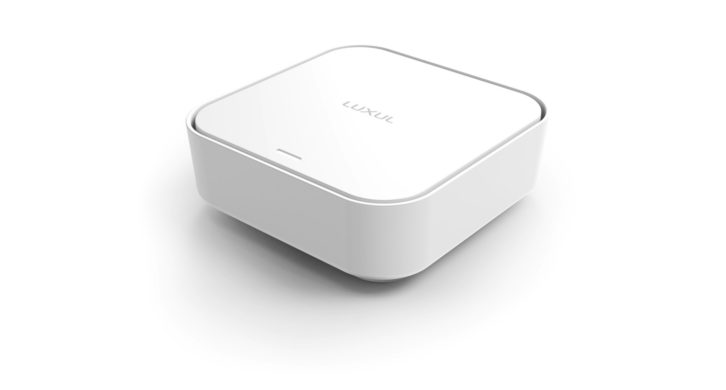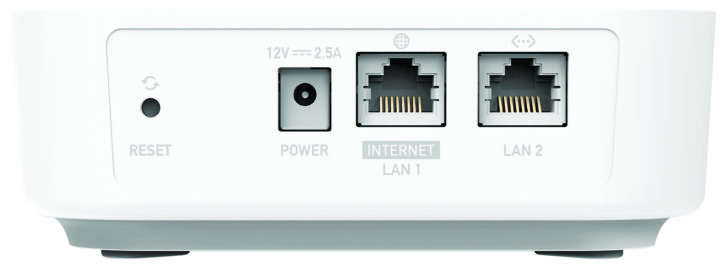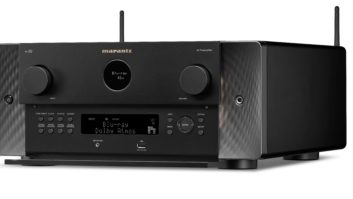
A few years ago (actually it was eight years ago; can you believe it?!), CEDIA told us we needed to “own the network” in order to “own the home.” That was certainly prescient advice as nearly every install we perform these days involves some amount of network connectivity, and that the homeowners’ “I’ll just pick something up at Wal-Mart” router just don’t cut it. (I originally wrote “no longer cuts it,” but, honestly, did they ever…?)
Our company switched to a premium networking solution, and I remember a lot of people initially balking at our proposals with $450-plus routers and $400-plus wireless access points. (You’ll understand if I shy away from using the term “WAP” right now, thank you very much Cardi B.)
But pretty soon even the customers caught on. They realized that as more of their lives revolved around being connected — especially wirelessly — and as ISPs started jacking up the speeds, the irritation of constant reboots, lockups, buffering, and single-bar Wi-Fi just wouldn’t do.
Residential Systems is now on LinkedIn! Click here to follow us for business and technology insights!
Today, the big network buzzword is “mesh,” and it is one our clients routinely mention. With a mesh Wi-Fi network, you can easily add additional nodes around the home without needing any wiring, quickly eliminating any dead spots, and ensuring consistent coverage and speeds. And nearly every consumer networking company offers a solution, including Amazon’s eero, Google’s Nest, Linksys’ Velop, Netgear’s Orbi, and Asus’ Zen. Hell, even Monoprice offers one!
But if you’re anything like me, you’ve shied away from adopting these DIY solutions. For one, trying to deal with their tech support can be brutal, plus there’s very little margin (and they’re available everywhere), and these systems typically share send/receive radio channels that can throttle speed and performance, or don’t have the backhaul capacity to handle numerous simultaneous clients.
Luxul offered our channel a tantalizing glimpse at its Epic Mesh networking system at CEDIA 2019 (where it won a Residential Systems Best-of-Show award), however it has taken it a full year to come to market. But it’s finally here, and they sent me a system to run through its paces!

Getting Started
My company uses Luxul as our primary networking solution, and prior to installing the Epic Mesh, my home’s network consisted of a Luxul XWR-3150 router controlling an XAP-1510 access point, so I’m very familiar with Luxul products. I was keenly excited to try the Mesh kit because the room where I do a lot of AV testing doesn’t have any Cat wiring and has weak Wi-Fi, which I was hoping the Mesh could resolve.
Luxul sent me three MN-10 nodes to try out. One acted as the router, replacing my XWR-3150, one hardwired to the router via Cat cabling to replace my XAP-1510, and the third wireless node sits in my test room. For reference, I live in a single story, 2200-square-foot home. As a rough estimate, Luxul suggested one node would cover 700-1000 square feet, and a system could support a total of 16 nodes.
Epic Mesh offers a tri-band (2×2, 2×2, 4×4) antenna array, enabling two 2×2 bands for all device connections, with a third 4×4 5 GHz dedicated backhaul channel for communication between nodes. By doubling throughput communication between nodes and utilizing the latest Wave 2 MU-MIMO (Multi-User, Multiple Input, Multiple Output) technology, the Epic Mesh can service more simultaneous clients without slowdowns. The system also supports Gigabit WAN to LAN throughput for blazing hard-wired connections.
Initial setup involves using the Luxul Easy Setup app on an Android or iOS device. The first node commissions as the router, and you start by connecting it to your modem, powering it up, and waiting for the LED to turn solid blue. From then on, it’s a simple matter of following the app’s instructions, starting with scanning in the QR code on the back of the node, answering whether it is a new or existing setup, creating an admin password, naming the node (i.e., living, bedroom), establishing the Wi-Fi SSID and password, and adding any additional SSIDs or guest Wi-Fi (it supports four SSIDs per band, eight total).
Related: Building a Robust Network
After dumping these settings into the first node, the app asks if you want to add any additional nodes, and you repeat the process. The whole setup took about 10 minutes. Although only about 35 feet away (and separated by one long wall), my single wireless node showed as a “Poor” connection, but Luxul said that was probably the system being overly conservative. Unfortunately, the setup app doesn’t offer any placement suggestions or signal strength meters.
The nodes are meant to sit flat/horizontal, and there currently isn’t a means to ceiling mount them or power them via PoE. However, Luxul says they are working on a PoE-ceiling-mount option that will be backward compatible with all existing units.
After completing the app-based setup, you can log into the router via a browser and make adjustments, configure static leases, set up port forwarding and DMZ settings, back up settings, update firmware, run trace routes, and so on. Luxul expects its new remote management solution, ProWatch, to be available shortly after launch, and the Epic Mesh will feature ProWatch+, allowing integrators remote access to the entire home’s network.
Unfortunately, for installers that have a preferred router, the Epic Mesh can’t currently operate in Bridge mode. (With a 13-year-old daughter, I for one really missed the Router Limits feature built into my XWR-3150.) However, Luxul received a lot of feedback on this feature during Beta, and says that both Bridging and Router Limits are features being considered as firmware updates at some point in the future. To keep things simple, the system also doesn’t support any VLANs (short of the guest Wi-Fi), which would be another argument for being able to place it into Bridge mode.

The Need for Speed
One of the first things customers do — especially after upgrading their ISP speed — is open an app and start measuring their Wi-Fi speeds, and without exaggeration, I took hundreds of speed test measurements all over my house with both my 3150/1510 combo and Epic Mesh system, comparing the results.
Initially, I was paying for 100 Mbps down from my ISP (Spectrum cable) and, in almost all cases, the Mesh system delivered comparable results in both signal strength and speed, except for the fringe area of my new room where I previously measured borderline speeds, where the Mesh system trounced it.
You can keep the 2.4 GHz and 5 GHz SSIDs the same, separate the bands into different names, or use a combination of both. Having eight total SSIDs to work with gives lots of flexibility, say for creating a Wi-Fi network (with a different password) just for the A/V gear. With a combined SSID, the Mesh will automatically choose which band devices join, and this method can offer better roaming performance and use beamforming for fringe connections. In my case, the single SSID resulted in significantly slower speeds in certain areas, and being able to manually select the 5 GHz band increased speeds by 200-to-300 percent in some areas. Obviously, your results may vary, but it is nice that you have lots of configuration options.
At this point, I was pretty thrilled with the way things were operating, so I decided to see how the Mesh would handle higher speeds. A call to Spectrum (and an additional $25/month) bumped my ISP speeds to 400 Mbps and, well, all hell broke loose.
After upgrading, I rarely got speeds over 30 Mbps no matter where I was in the home. I started with a service call to Spectrum who came out and replaced my modem with a new one, and then set up a support call with Luxul engineering. Over two days — and nearly eight hours on the phone where I completed hundreds more speed tests using different routers — we still don’t fully have an answer.
Plugging directly into the modem, I rarely hit speeds over 80 Mbps. Going into the Mesh or XWR-3150 router delivered similar 80 Mbps results. But with Wi-Fi? I routinely get speeds 350-to-400+ Mbps. And I also routinely get speeds that are in the 30-to-50 Mbps range.
Related: Integration Guide to Networking – Keeping the Network Strong
I don’t know if it is something with the wiring, the ISP, the modem, the router, the speed test site being used, the device I’m testing with, or just the uneasy shifting of molecules in the air at that nanosecond in time. As I sit in the testing room in my house, my laptop is pulling down speed tests well over 200, while my iPhone 11 in the exact same spot connected to the same 5G network, using the same speed test app and server is pulling around 20. Mind-searingly frustrating? Absolutely.
In running all of these tests, something else I discovered is a wild disparity between speed test apps. Ookla’s speed test — one of the most popular ones —delivers the most inconsistent and slowest results with the biggest variances, and is especially temperamental based on what server is being used. Oka WiFi (an iOS app with a 4.6-star rating) regularly returns the highest speeds, and Speedcheck Internet Speed Test (another iOS app with a 4.9-star rating) delivers results somewhere in between. And Fast.com — a service run by Netflix — almost never delivered results above 45 Mbps.
End Results
Getting away from the speed test results, what I noticed with the Mesh network installed is perfect Wi-Fi performance in my test room; no buffering while streaming 4K video or lockups in Zoom calls. Since adding the 400 Mbps speeds, my Control4 app pops open far quicker.
A final thing worth mentioning is the price. While Luxul doesn’t set MSRP, the Epic Mesh system will be premium-priced compared to any of the other current mesh offerings, with an MN-10 two-pack selling for more than an eero Pro Mesh three pack. If you were waiting for the Epic Mesh to be a low-cost solution, you might be disappointed. Of course, with this price you get Luxul’s three-year warranty and lifetime U.S.-based tech support, plus significantly higher dealer margins, so those are definitely worth considering.
Our channel has been looking for a premium Wi-Fi mesh solution, and the Luxul MN-10 Epic Mesh definitely checks a lot of boxes, and makes another great tool to have at your disposal.
801-822-5450; LUXUL.COM
Kudos: Easy setup, solid Wi-Fi performance
Concerns: Currently no ceiling mount or PoE solution, pricey
Product Specs:
- Simple-to-deploy Wi-Fi mesh network with app-based setup
- Tri-band 4x2x2 radio with high-capacity 4×4 5 GHz backhaul channel between nodes
- Wave 2 MU-MIMO with Beamforming
- Gigabit WAN to LAN connectivity
- Up to eight SSIDs (four per band)
- Two Ethernet ports per node allows connecting both wired client device and Ethernet switch
- Wave 2 MU-MIMO with Beamforming supports multiple clients at once
- Three-year warranty; lifetime technical support



